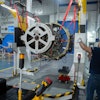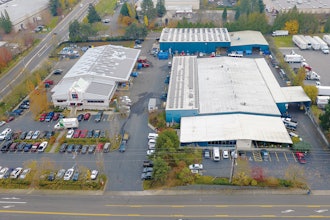“It used to be that a CEO could maintain the same basic formula for creating, delivering and capturing value for his entire career. Now, it’s unlikely to last a decade.”– Greg Satell
In his groundbreaking 2012 book, the Business Model Innovation Factory, Saul Kaplan argued that companies must treat their business models much like products. They should be constantly assessed, redesigned, prototyped and tested.
These days, you don't have to look far on the internet to find supporting arguments. As scholars, business analysts, and good old fashioned observation have shown us, maintaining the status quo is a recipe for disastrous failure. This is particularly true for the manufacturing space, where institutionalized and standardized practices were once the very hallmark of success.
Balance Best Practices with Next Practices
Every chief executive worth his salt knows that the key to growth lies in scaling what works.
Except now, it isn't.
Replicating successful strategies is critical, to be sure. But it comes with a hidden pitfall. We can become so focused on what's working now that we stop thinking about what will work better tomorrow. As Mr. Kaplan himself recently put it, we can't let best practices divert our attention from "next practices."
As a result, the role of managers has changed. In the past, management focused on execution. If you could move people and materials efficiently, buy for a dollar and sell for two, you’d be successful. Manufacturers, in particular, doubled down on institutionalizing efficiencies and planning seamless operations. We've spent the past 100 years perfecting the principles of Henry Ford.
But today, manufacturers must be more agile and responsive. We must be ready to make decisions and shift gears in an emergent context. Compartmentalizing our operations into myopic, repetitive processes will not yield improvement or long-term financial success. Instead, we must have a broad view of the landscape, and pounce on opportunities on the horizon.
Mastering Change
For all my talk about change and preparing for the future, what I'm advocating for isn't a new concept. In fact, it's ancient. More than 2,000 years ago, Master Sun tackled this idea in his enduring book of wisdom, The Art of War. He argued that this sort of adaptability is crucial to gaining the upper hand.
Sun found the enormous power of water to overcome and reshape the landscape inspiring. He noted "water shapes its current from the lie of the land. [It] has no constant form. Supreme... skill lies in deriving victory from the changing circumstances."
Maintaining such fluidity and staying on the edge of innovation isn't easy. In fact, it can be downright scary and exhausting. I've spent my career helping manufacturing companies undertake digital transformations. I've seen fear of change and change fatigue delay and totally derail modernization efforts.
But those companies that can learn to ride the waves of change are the ones that will survive. Others will drown beneath them. Those that go a step beyond and harness the energy of that flow will flourish and thrive.
Andrew Rieser is president and co-founder of Mountain Point.






















